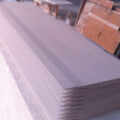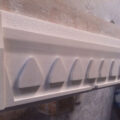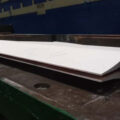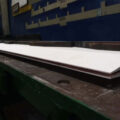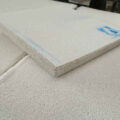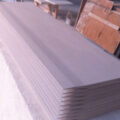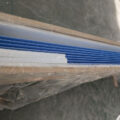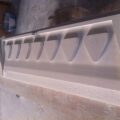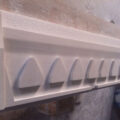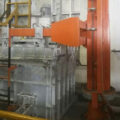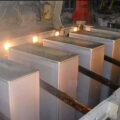The feed casting tip is a key component of the aluminum strip continuous casting and rolling mill, and its quality directly affects the quality and output of the aluminum strip. It includes a narrow inlet at the rear and a wide inlet at the front. In the material passage between the inlet and the discharge port, the partition block divides the material passage into two side-by-side parts.

The liquid impurities in the aluminum alloy melt in contact with the surface of the casting nozzle precipitate and solidify as the temperature decreases, resulting in an increase in the surface roughness of the casting nozzle and slagging of the casting nozzle. At high temperatures, the aluminum melt is in contact with the SiO2 particles in the nozzle material for a long time, and Al2O3 particles are formed on the nozzle surface, which aggravates the occurrence of nozzle clogging.
Molten aluminum is easy to solidify on the uneven surface of the nozzle, and the cavity of the nozzle gradually narrows, eventually causing the nozzle to be clogged. A three-layer structure is formed in the blocked nozzle cavity, with a reaction layer, a slag layer, and a metal layer distributed.
Fluid inside the Feed Casting Tip
- Near the center of the cavity, the flow rate is fast and the flow is relatively stable.
- Near the cavity wall, the flow rate is slow and steady.
- In the middle part, the flow rate is moderate, but the flow state is complex and changeable.
The casting speed, the width of the casting plate and the surface roughness of the nozzle cavity have a major influence on the flow of the melt in the nozzle cavity. With the continuous increase of casting speed, the turbulent state of melt flow in the cavity becomes more complicated. As the width of the casting increases, the speed gap between the edge of the nozzle exit and the middle exit will increase. With the continuous increase of the surface roughness of the nozzle cavity, the smooth flow near the wall is destroyed and replaced by complex turbulence, which intensifies the slagging phenomenon.

